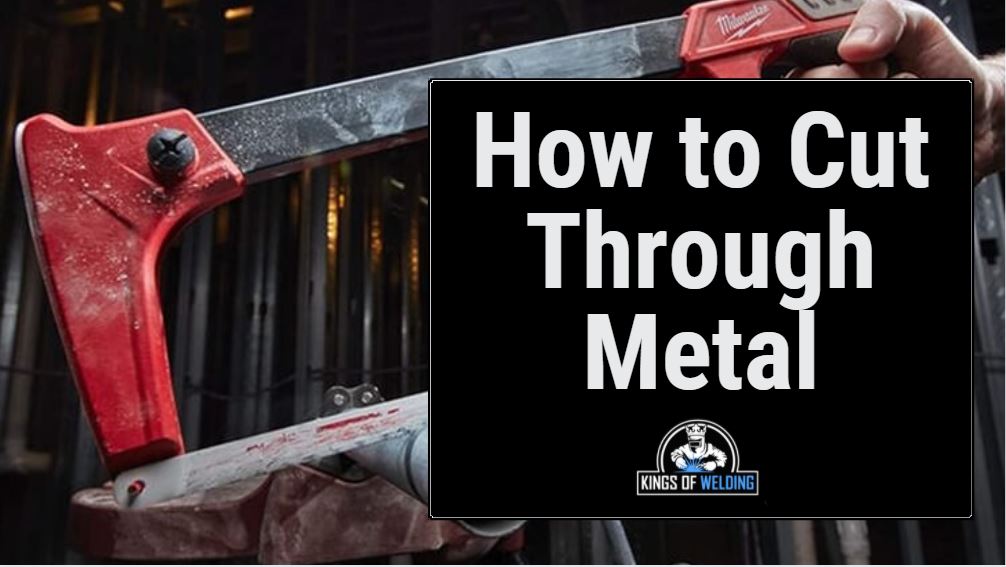Most metalworking projects require metal to be cut at some point and there’s a range of different tools you can use depending on your project.
We’ve listed metal cutting tools from the least expensive to the most expensive with some of the pros and cons of each. Are you looking to cut pipe, sheet metal, are you on a budget, do you want portability? This guide explains 11 of the best ways to cut through metal to help you choose.
Contents
1. Hacksaw (≈$10)
A hacksaw is a very basic hand tool for cutting metal. To use a hacksaw, hold the handle and simply press the blade against the metal and move the blade back and forth in a typical “sawing” motion.
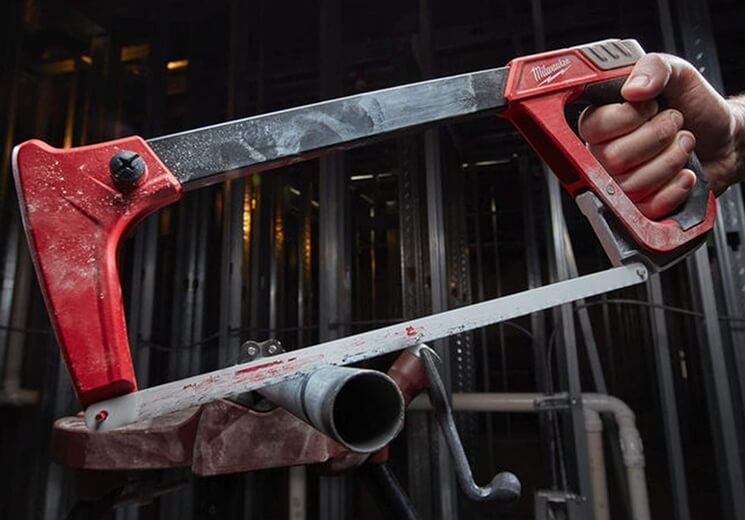
Using a hacksaw requires muscle power and can be slow and tiring. It’s an good entry-level tool on a budget but not what you want if you have a lot of metal to cut.
2. Tin Snips (≈$10)
Tin snips are great for quickly cutting thin gauge sheet metal and metal mesh. Tin snips can cut in a straight line or have curved blades that cut clockwise or counter clockwise.
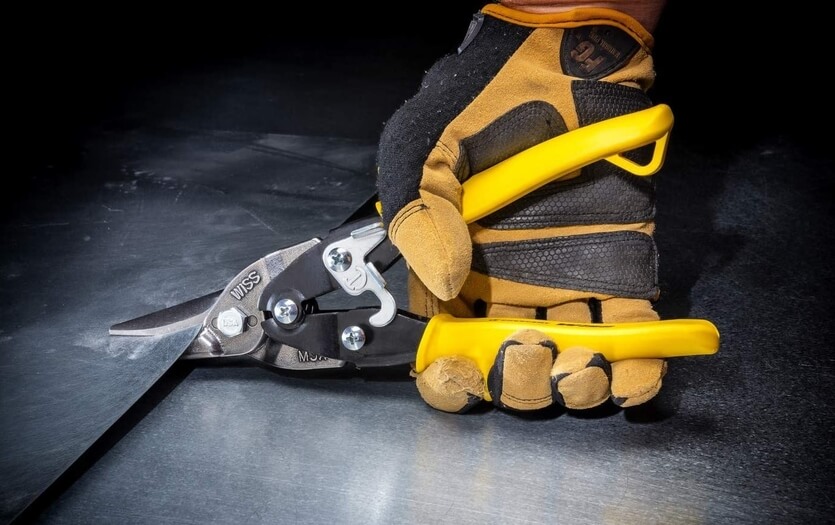
They’re quick and easy but are only suitable for very thin flat metal and are likely to leave the edges serrated.
3. Air cut-off tool ($30-$60)
An air cut off tool is basically a miniature angle grinder that runs off air. It has a small 3” cutoff wheel. These are good for if you need something that can get into smaller areas and can be used with one hand.
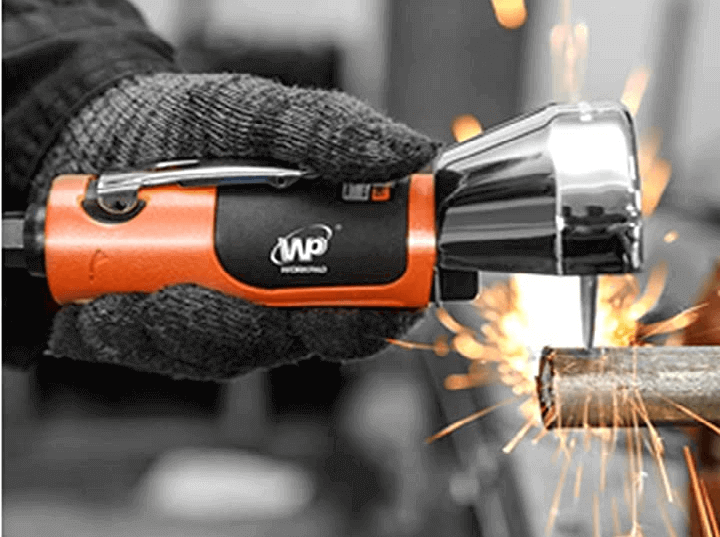
They can also make sharper turns because of the smaller blade. They’re a decent choice for cutting out tack welds or for autobody work.
4. Metal Shears ($40-$100)
Metal shears are like electric tin snips. They cut much faster than tin snips and are ideal if you have a lot of thin sheet metal to cut.
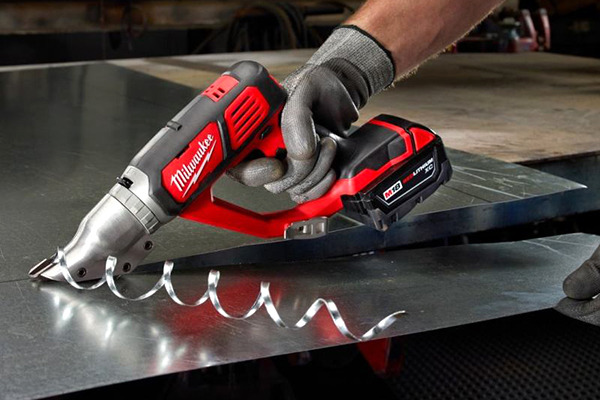
They’re great for straight lines and can also cut on the turn. They do remove a thin strip of metal from the sheet about ¼” wide and are a good option for trimming fenders.
5. Reciprocating Saw/Sawzall ($50-$150)
A reciprocating saw is like a hacksaw with a motor on it. It has a metal blade that can run off either a battery or power outlet to cut through metal easily thick or thin.
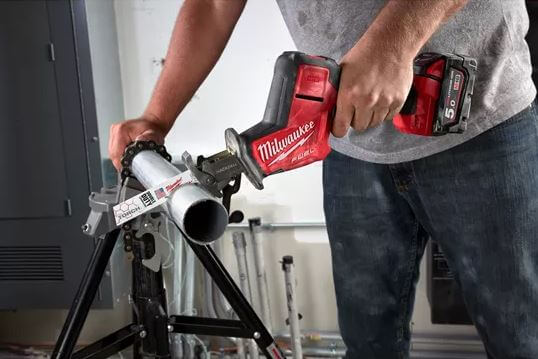
The name Sawzall is often used when describing a reciprocating saw, however, these are actually a specific brand by Milwaukee. Sawzall requires 2-handed operation, while Hackzall requires 1-handed operation. They are especially useful for cutting through pipes and are regularly used in HVAC.
6. Angle Grinder ($60-$150)
An angle grinder is probably the most commonly used power tool by welders. They are great for grinding but you can also switch the grinding wheel for a cutoff wheel when cutting metal.
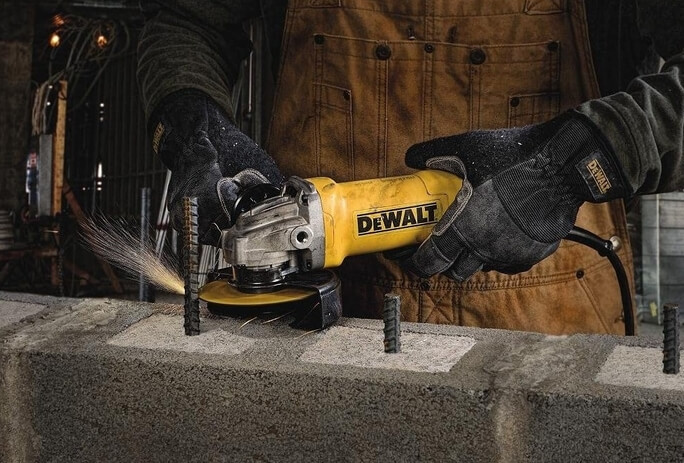
Cutting wheels are typically 4.5 inches in diameter. They’re not the best for neat, straight lines as you need to guide them with your hands, but they’re perfect if you need to cut something quickly and as a multi-purpose tool they’re a must-have item in any welding workshop.
7. Chop Saw ($100-$500)
A chop saw is a huge spinning saw that is stabilised on a worktop. You operate the saw by pulling down a lever in a chop-like movement.
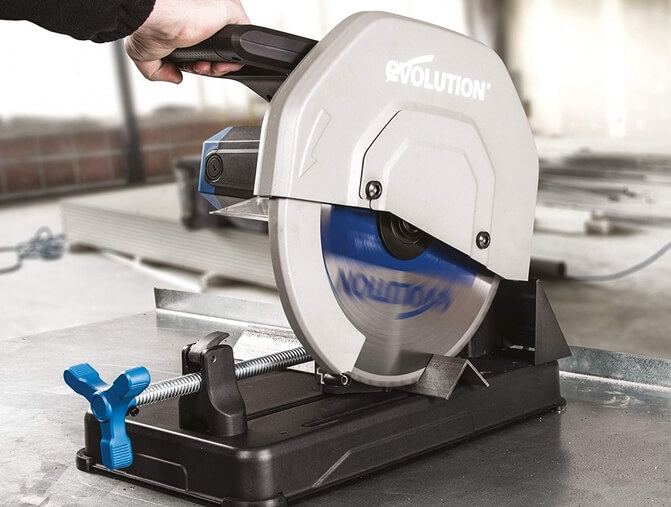
Chop saws cut through metal really fast at 90 degrees and are perfect for quickly cutting metal pipe, flat stock or square steel tubing. Old chop saws have abrasive blades but newer more expensive models have carbide tip blades that cut cleaner, colder and with less sparks.
8. Circular saw ($100-$350)
A circular saw is similar to a chop saw except it is not fixed to the worktop, it is handheld. Circular saws will typically be portable and held with two hands to guide the blade through the metal by pushing forward through the metal. The blade will be partially covered by a guard to protect the operator.
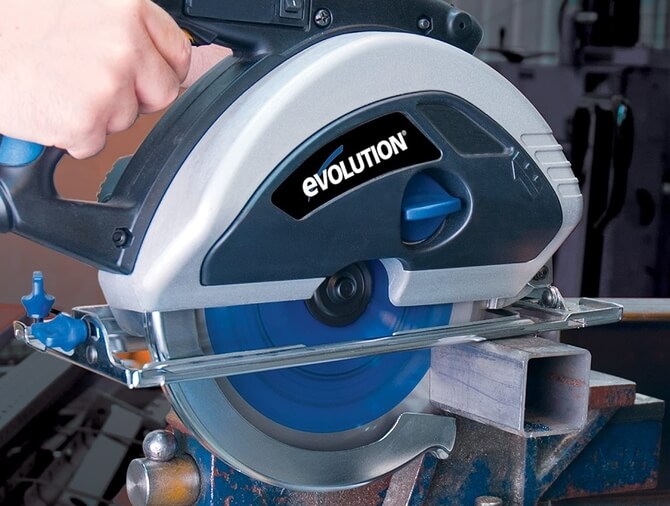
Circular saws are good because they’re portable and cut quickly, however, those wanting more uniform cuts are better with the stability of a chop saw.
9. Bandsaw ($350+)
Bandsaws can be horizontal or vertical, usually with a pivot to alternate between the two. Horizontal bandsaws are pretty handy for cutting big bits of pipe where you can clamp it in place and let the bandsaw do the hard work.
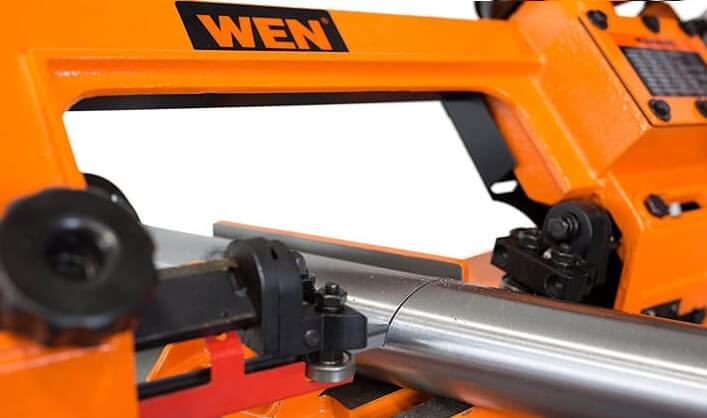
Bandsaws are quieter than a chop saw but slower, bigger and can be more expensive. However, you can buy a portable bandsaw which you can take with you to a job.
10. Oxyfuel cutting ($200-$500)
Oxyfuel cutting is the process of cutting with a torch that uses oxygen and a fuel gas such as acetylene or propane. With an oxyfuel you can cut through steel as thick as 10 inches.
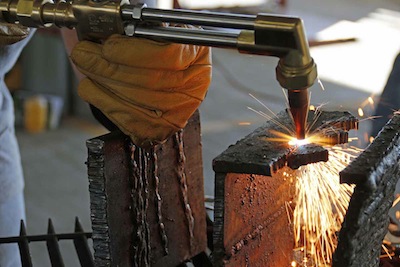
An oxy-acelyene cutting torch kit is multi-purpose because it can be used for heating, welding and brazing. It requires a bit more skill than a stabilised saw and more equipment because you’ll need to hook up to a gas supply.
11. Plasma cutter ($500+)
Last but not least is the plasma cutter. This is our favorite tool for cutting metal. They work by hooking the plasma cutter up to a power supply and air compressor (although some units have a built in air compressor) and you fire a hot jet of plasma from the torch. This allows you to make a diverse range of straight and intricate cuts at different depths.
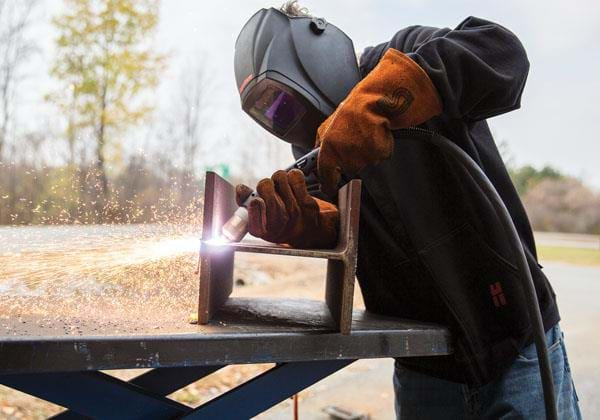
Plasma cutters are expensive but they cut through metal like a hot knife through butter.

